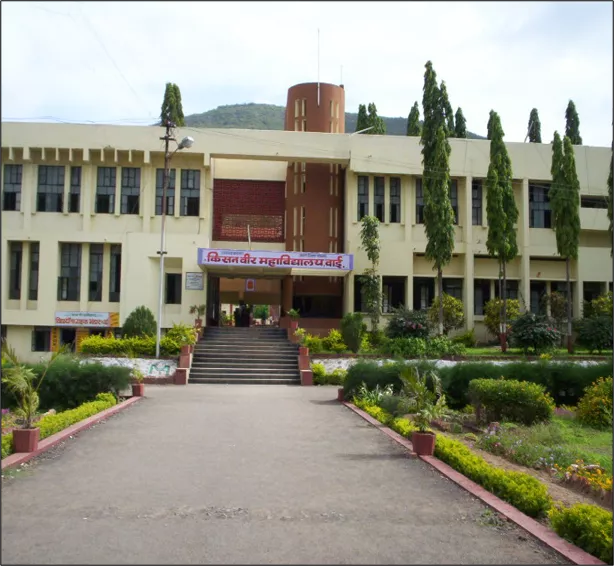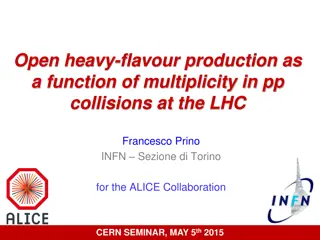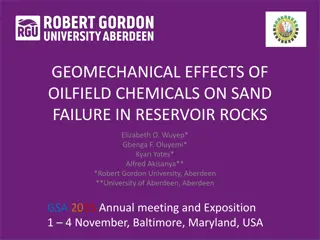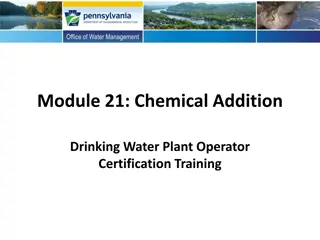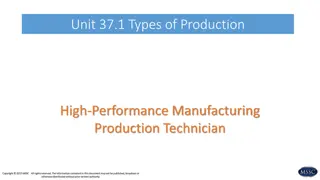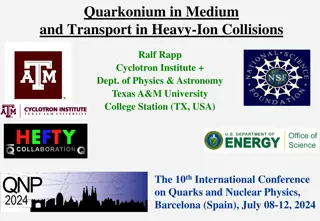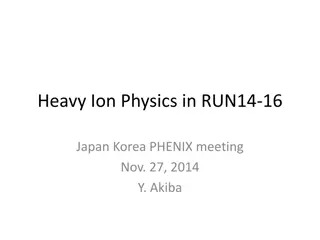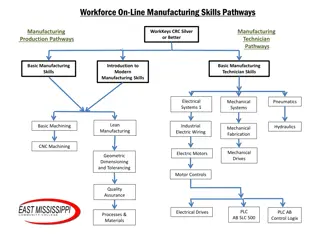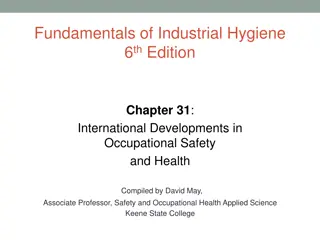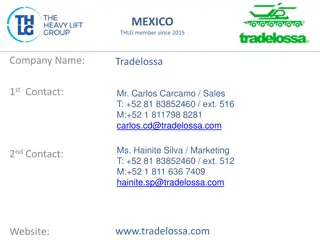Overview of Heavy Chemicals Manufacturing Process
The field of industrial chemistry involves the large-scale preparation of heavy chemicals, which are chemicals produced and used commercially. This process requires an understanding of various physico-chemical principles and specific manufacturing techniques for chemicals like Ammonia, Sulphuric Acid, Nitric Acid, and Sodium Carbonate. The key factors affecting the production of these chemicals include temperature, pressure, concentration, and the use of catalysts. The Haber-Bosch process is a notable method for manufacturing Ammonia, developed by Fritz Haber and Carl Bosch. By controlling temperature, pressure, and concentration, industrial chemists optimize the synthesis of heavy chemicals on an industrial scale.
- Heavy Chemicals
- Industrial Chemistry
- Manufacturing Process
- Haber-Bosch Process
- Physico-Chemical Principles
Download Presentation

Please find below an Image/Link to download the presentation.
The content on the website is provided AS IS for your information and personal use only. It may not be sold, licensed, or shared on other websites without obtaining consent from the author. Download presentation by click this link. If you encounter any issues during the download, it is possible that the publisher has removed the file from their server.
E N D
Presentation Transcript
Dr. Dnyandev. N. Zambare M. Sc. Ph. D Associate Professor Department of chemistry Kisan Veer Mahavidyalaya, Wai. Kisan Veer Mahavidyalaya, Wai. Dist- Satara pin- 412803 Mob. no.-9890891947
Chapter 1. Manufacture of Heavy Chemicals (8) Contents 1.1 Introduction 1.2 Manufacture of Ammonia (NH3) i. Physico-chemical principles ii. Manufacture by Haber s process 1.3 Manufacture of Sulphuric acid (H2SO4) i. Physico-chemical principles ii. Manufacture by Contact process 1.4 Manufacture of Nitric acid (HNO3) i. Physico-chemical principles ii. Manufacture by Ostwald s (Ammonia oxidation process) 1.5 Manufacture of Sodium carbonate (Washing soda) (Na2CO3) i. Physico-chemical principles ii. Manufacture by Solvay process
.1 Introduction (General Account) 1.1 Introduction: Industrial chemistry is the branch of chemistry which deals with the preparation of various chemicals on a large scale. The chemicals which are manufactured and consumed on commercial scale are generally known as the heavy chemicals. The rate of a chemical reaction depends on several factors such as temperature, pressure (of the gaseous reactants), concentration and use of catalyst.
: 1.2 Manufacture of Ammonia (NH3) i. Physico-chemical principles ii. Manufacture by Haber s process This process was developed by Fritz Haber and Carl Bosch (German Chemists during 1904 to 1908), and therefore known as Haber Bosch process. i. Physico-chemical principles The key reaction of Haber's process is N2 (g) + 3H2 (g) 2NH3 (g) +100 kJ ....(1) 1 vol 3vols 2 vols (a) Effect of Concentration: By applying Law of Mass action to reaction (1) the equilibrium constant, Kc (for molar concentrations) is: to get good yield of NH3, concentration of both N2 and H2 should be increased
(b) Effect of Temperature: N2 (g) + 3 H2 (g) 2 NH3 (g) + 100 kJ Since the reaction is reversible and exothermic, the decrease in temperature should favour the formation of ammonia. The effect of temperature on ammonia synthesis can be ascertained from the mass law equation as given below: Experimentally, the optimum temperature is found to be 500 - 550 C,(773 - 823 K).
(c) Effect of Pressure: At a given temperature, increase in pressure increases the yield of ammonia. In practice, the process is carried out by applying the pressure equal to 200 atmospheres (202 x 105 Pa).
(d) Effect of Catalyst: Time of Contact (Space Velocity) : (i) Low Temperature (773 to 823 K) (500 - 550 C) (ii) High Pressure ( 202 x 105 Pa or Nm-2) ( 200 atm.) (iii) Concentration of N2: H21: 3 (iv) Space Velocity 600 - 1200 m3 (v) Catalyst: (Fe2O3 + Mo) or (Fe2O3 + Al2O3 + K2O).
Manufacture by Habers process (Plant and Process):
Working: (i)Production and purification of the reacting Gases: Nitrogen and hydrogen are the basic requirements of Haber's process. Hydrogen can be obtained from water gas (CO + H2), or from electrolysis of acidified water or from decomposition of steam or from natural gas. Nitrogen is obtained from producer gas (CO + N2) or air or from liquid air by fractional distillation. (ii) Conversion to Ammonia: N2+ 3 H2 2 NH3 + 100kJ (iii) Liquefaction of Ammonia: This mixture is then passed through condensing coils (immersed in the refrigerated brine) where it is cooled to about 10 to 20 C (263 to 253 K). Gaseous ammonia condenses to liquid ammonia and is collected.
Merits of Haber's Process: ( i) Highly pure and concentrated ammonia is obtained. (ii) Process is cheap and economical on unit cost basis. (iii) The working conditions being simple, the process can be carried out at any place. (iv) With no loss, 8 to 12 % of NH3 is produced in each circulation by Haber process. In other methods, % yield of NH3 is less than 5. World production of NH3 was 1 million tonnes per year in 1950 and it has risen to 98 million tonnes in 1988. The largest producers are Russia 27 %, China 21 %, USA 18 %, Canada 4 %, Romania 4 %, etc.
Manufactureof H2SO4 by Contact process: In a nut shell: S(g) SO2(g) SO3(g) H2S2O7(l) 2H2SO4(l) (Conditions to get good yield of Sulphur trioxide): The entire success of contact process lies in the catalytic oxidation of sulphur dioxide to sulphur trioxide by atmospheric oxygen. This reaction may be represented as: 2 SO2 + O2 2 SO3 +189 kJ 2 vols 1vol 2 vols
Physico-chemical principles (i) Effect of Concentration: In the reaction mixture proportion of nitrogen and hydrogen should be 1: 3 (b) Effect of Temperature: N2 (g) + 3 H2 (g) 2 NH3 (g) + 100 kJ the optimum temperature is found to be 500 - 550 C, (773 - 823 K). The process is carried out by applying the pressure equal to 200 atmospheres (202 x 105 Pa).
(c) Effect of Pressure: Increase in pressure should lead to increase in yield of SO3 because with increase of pressure volume is found to decrease. In actual practice, all contact plants are operated at atmospheric pressure that is, without appixing any pressure or at slightly higher pressure of 1.5-1.7 atmospheres. The conversion of SO2 to SO3 in the presence of catalyst is made of following steps : Diffusion of reacting gases (SO2 + O2) to the surface of catalys Adsorption of reactants at the surface of catalyst. Formation of product (SO3) at the surface of catalyst. Desorption of product from the surface of catalyst. Diffusion of SO3 away from the surface of catalyst.
(d) Effect of Catalyst: Finely divided platinum is the most efficient catalyst. It is applied on several carriers such as asbestos, calcined magnesium sulphate, silica gel etc. Asbestos fibers coated with finely divided platinum are called platinised asbestos. Most widely used vanadium catalyst is V2O5. It is prepared in the form of pallets by igniting a mixture of zeolite (carrier) and suspension of V2O5.
Manufacture by Contact process: (Plant and Process)
Working: The contact plant consists of the following parts: (1) Pyrites Burners (2) Purification unit : (i) Dusting Tower, (ii) Cooler (iii) Scrubber, (iv) Drying Tower, (v) Arsenic Purifier,(vi) Asbestos Filter, (vii) Testing Box or Tyndall Box. (3) Contact Converter or Contact Tower. (4) Absorption Tower. The manufacture of sulphuric acid by contact process is carried out in four steps as discussed below: 1. Production of SO2, 2. Purification of reacting gases, (if pyrites are used), 3. Conversion of SO2 to SO3, and 4. Absorption of SO3 in conc. H2SO4. Merits and Demerits of Contact Process: Demerits:
1.4 Manufacture of Nitric acid (HNO3) Physico-chemical principles: (a) Effect of Concentration: Consider the reaction: 4NH3 + 5O2 4 Vols. 5 Vols. 4 Vols 6 Vols. (b) Effect of temperature brings about this conversion very rapidly even at 750 -8000C. (c) Effect of Pressure: three convenient ranges of pressure are found to be suitable. 1) A little above the atmospheric pressure, 2) The intermediate range (i.e. 3-4 atmospheres) and 3) The higher range (i.e. 7-9 atmospheres). (d) Effect of Catalyst: The oxidation of NH3 without a catalyst does not take place sufficiently quickly,platinum as the best catalyst 4NO + 6 H2O + 216.6 k cals
Working: The Ostwald process is carried out in five steps. i) Production of NH3 by Haber process: ii) Oxidation of NH2 to NO, iii) Oxidation of NO to NO2, iv) Absorption of NO2 in water, and v) Concentration of Nitric acid. The details of working of Ostwald plant are as follows: 4 NO2 + O2 + 2H2O 4HNO3
1.5 Manufacture of Sodium carbonate (Washing soda) (Na2CO3) i. Physico-chemical principles: From theoretical discussion it is clear that the Solvay process is based on the precipitation of sodium bicarbonate by the reaction between sodium chloride (brine) and ammonium bicarbonate from aqueous solution. i.e. NaCl + NH4HCO3 NaHCO3 +NH4Cl Ionically, Na+ + Cl- + NH4+ + HCO3- NaHCO3 +NH4+ + Cl- By neglecting common ions, we get Na+ + HCO3- NaHCO3 Solvay pointed out that precipitation of NaHCO3 does not occur if NH2HCO3 is prepared first and followed by the addition of brine solution.
Thus NH4HCO3 is the most soluble while NaHCO3 is the least soluble at 300C. Therefore NaHCO3 is quantitatively precipitated out in the presence of braine at 30 C, due to common ion effect of Na+ ions (from NaC1) and HCO3- ions (which are obtained by passing CO2 through solution). The possible reactions are: i) NH3 + H2O NH3.H2O i.e NH4OH NH4OH NH4+ + OH ii) CO2 + H2O H2CO3 H2CO3 H+ + HCO3- iii) CO2 + OH HCO3- iv) NaCl+ H2O Na+ (aq) + Cl-(aq) (Ionisation) Thus the net reaction is: v) Na+ + Cl- + NH4+ + HCO3- NaHCO3 +NH4+ + Cl- i.e. Na+ + HCO3- NaHCO3
Conclusion: To get good yield of NaHCO3, the following conditions have to be established. Saturated brine solution to be used to get high initial concentration of Na+ ions. High concentration of NH3 is needed to get higher amount of NH4HCO3 that gives high concentration of HCO3-. Working temperature should be as low as possible to decrease the solubility product of NaHCO3. Ammonia should be first absorbed in brine and then CO2 is to be passed in Thus good yield of NaHCO3 gives better yield of Na2CO3. The Solution is filtered and NaHCO3 is separated. It is dried and ignited to get anhydrous sodium carbonate called soda ash. 2NaHCO3Na2CO3 + H2O+ CO2
Manufacture by Solvay process (Plant and Process):
Working:For Solvay process, (i)Purification of Brine and Saturation of Brine with Ammonia: NH3 + H2O + CO2 ( NH4)2CO3 CaCl2 + (NH4)2CO3 CaCO3 + 2NH4Cl MgCl2 + ( NH4)2CO3 MgCO3 +2NH4Cl (ii) Carbonation: The reactions occurring in carbonation tower are as follows: NH3 + H2O + CO2 + NaCl NaHCO3 +NH4Cl Or NH4HCO3 + NaCl NaHCO3 +NH4Cl Ironically NH4+ + HCO3- +Na+ + Cl- Discarding the common, we get; Na+ + HCO3- NaHCO3 (iii) Filtration: ions The solution collected at the base of the carbons ting tower is passed through a vacuum filter of a continuous rotary type. Sodium bicarbonate is separated out while the mother liquor containing NH4Cl and a little NH4HCO3 is pumped up to the top of ammonia recovery tower to recover NH3. NaHCO3 +NH4+ + Cl
iv) Calcination: Sodium bicarbonate, thus obtained is dried and heated at about 300 C in a specially designed vessel whereby Na2CO3 is obtained. 2NaHCO3 Na2CO3 + H2O+ CO2 (v) Generation of CO2: Limestone is heated in lime-kiln and CO2 is produced for carbonation. CaCO3 CaO + CO2 (vi) Recovery of Ammonia : Steam decomposes NH4HCO3 in the upper part of the tower. NH4HCO3 NH3 + H2O + CO2 Milk of lime decomposes NH4Cl in the lower part of the tower. 2 NH4Cl + Ca (OH) 2 2NH3 + CaCl2. + 2H2O
The flow-sheet of Solvay process may be shown as follows:
Advantages of Solvay Process: (i) The raw materials required for Solvay Process are cheap and easily available on large scale. (ii)The process is continuous and very efficient. (iii) The process is more or less self-contained with a little loss of CO2 and NH3 (iv) The product obtained is quite cheap and highly pure. (v) Low grade brine can be used, less raw materials are required. Power consumed is less, no investment for NH3 plant corrosion problems are less. In short, the cost of production is low and thus the process is more economical. (vi) The co-produce to be disposed of is CaCl3 which is rather in expensive.










